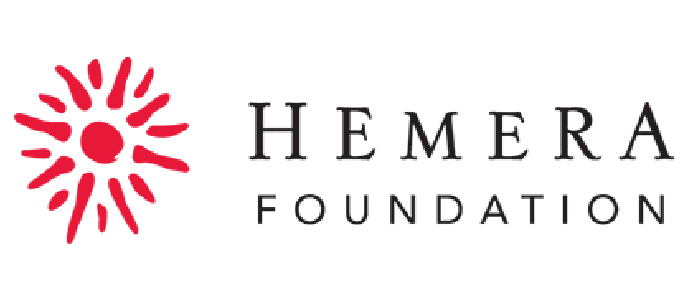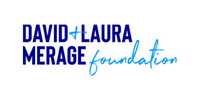RedLine is a proud partner and administrator of the Arts in Society grant. This collaborative program provides grants to both individuals and organizations that use art as a vehicle to promote social justice and community welfare.
We love highlighting our Arts in Society (AiS) grant recipients and all the unique and impactful projects made possible by their grant.
We’re excited continue this series with the 2022 AiS Grantee: WOVE.
What is WOVE?
Odeile and Chapin are co-creative directors of WOVE, an artist collective exploring the role art plays in creating and supporting livable communities where people of all ages and backgrounds can thrive.
They use their collective experience in art, costume/fashion design, performance, and set design to produce eye-catching, smile-inducing fiber sculptures and installations that bring joy to audiences younger and older.
In addition to WOVE they work together in their non-profit, Design Age Friendly, working with rural and frontier communities to respond to the impacts of an aging population.
DAF’s mission is to support marginalized and under-resourced communities to take their seat at the age-friendly table.
Tell us about your first project that will utilize your AiS Grant
FROG, created with 80 miles of yarn and over three million stitches, refers to the common and sometimes heartbreaking practice of unraveling knit or crochet stitches.
With every tug on the yarn, we say rip-it, rip-it as we watch our hard work disappear into a pile of curly thread on the floor - ready to be wound again and transformed into something new.
FROG, knitted twice* by Emilie Odeile and yarn-bombed CHAIR, built by Ken Chapin (both frogged numerous times) are intended to inspire a conversation about the moments in life when it’s time to let go of what we’ve made, or who we’ve become as individuals or communities, and stitch together a new version of ourselves.
This mega and meta fiber sculpture is a lightning rod to draw attention to an unprecedented shift in our community’s demographics.
For the first time in recorded history, people aged 60 and over will soon outnumber those aged 18 and under - a shift which will require us to rethink, and even frog, systems built on outdated models.
“FROG is an exploration of what it means to begin again, and again.”
FROG was a focal point for the Grand Re-Opening of VFW1 and the backdrop for an artist talk and knitting circle with Knitting4Peace. After nine weeks on display, we were invited to display FROG at the Grand Opening of The Commons / Space To Create in Trinidad, where he currently resides.
*Yarn was knitted into rope before FROG could be knitted with giant needles.
What's next in the pipeline for your organization in 2022? What other projects are you dreaming up this year, and how will your AiS grant help to support these efforts?
Our next exhibition, scheduled for the second quarter of 2023, builds on the momentum and partnerships that resulted from FROG.
This immersive fiber installation, set to be unveiled at The Commons / Space To Create, a 20,000 sqft space in Trinidad, invites visitors into a whimsical interactive exhibit made entirely of touchable fiber - a tactile wonderland bursting with color and texture that can be enjoyed by people of all ages and sensory abilities.
In addition to preparing for our next exhibition we’re working with Knitting 4 Peace to distribute hundreds of knitted hats and scarves to youngers and olders in small rural communities.
We’ll continue facilitating Art of Age Friendly workshops to help Southern Colorado communities become more livable for people of all ages.
What was your experience like when applying for an AiS? What tips would you share with artists looking to apply for an AiS grant?
The AiS grant was our first ever attempt at grant writing and we were relieved to find the process less daunting than anticipated. The questions presented in the application actually helped to clarify and organize our ideas and ultimately made for a better, more complete proposal.
We couldn't be happier with our experience and are thrilled that we received funding for this important work that would likely not have been possible without the financial support AiS provided.
In addition to the funding itself, we are grateful to be working with Redline — the staff has been incredibly helpful in navigating the grant process and managing the project.
We believe our proposal was competitive because we were able to convey the importance of the work we do, our passion for it, and a clear vision of how to utilize our over the top artwork to draw attention to it.
While a larger-than-life-twice-knitted-FROG-sitting-atop-a-giant-yarn-bombed-CHAIR-while-knitting-a-future-version-of-himself may not seem the obvious choice to highlight the age-friendly movement, we were impressed with how many meaningful conversations about re-evaluating, frogging, and beginning again were inspired by his presence.
For anyone considering applying for an AiS grant, our advice is to get clear on what you do and why you do it. If you believe beyond a shadow of a doubt that your work has the potential to benefit your community, you’re likely not alone.
Find partners and collaborators with strengths different from your own to maximize your ability to do the greatest amount of good for the greatest number of people. Plan to spend a good amount of time writing - and rewriting - your proposal.
Express thoughtfully how you’ll utilize the funding and demonstrate that you are clearly capable of executing your plans successfully and on time.
Run your proposal by a neutral party who doesn’t know all the particulars. Their perspective will let you know how clearly you’ve laid out your project and where you may need to rethink your approach.
And then take a breath and submit it! It will never be perfect and that’s okay. Done is beautiful.
Meet Another Arts in Society Grantee: The Red Road Project
The Red Road Project began in 2013 by two friends, Danielle SeeWalker and Carlotta Cardana. The project aims to explore and document the Native American narrative and offer the viewer a contemporary and Indigenous representation of the American Indian perspective.
Through The Red Road Project, Native peoples and communities have a platform to utilize their own voices and be seen the way they want to be represented.









